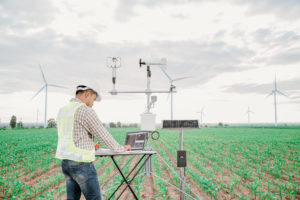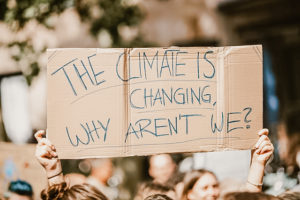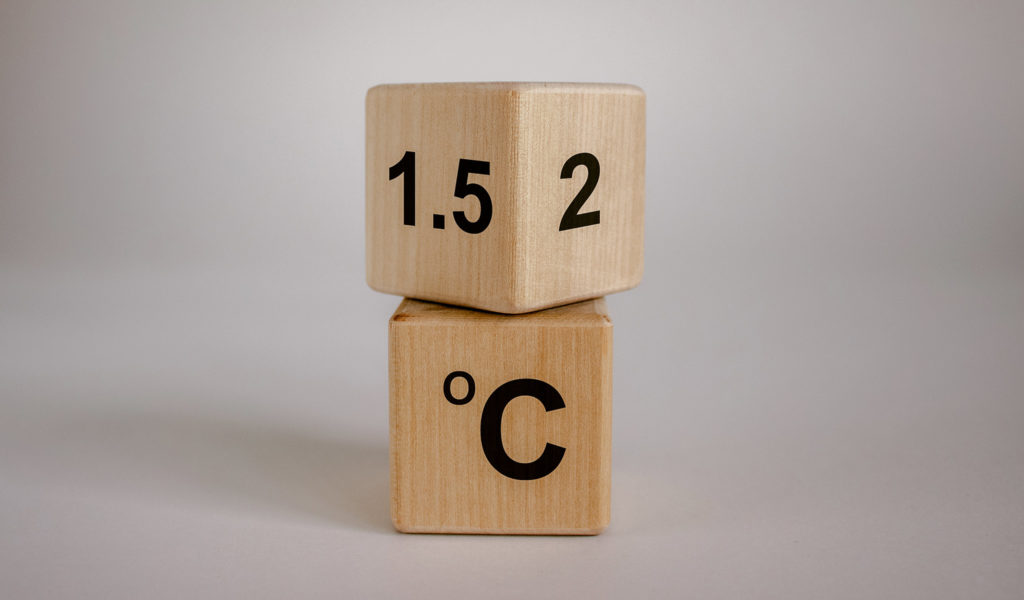While criticisms have been laid at the door of the COP26’s failure to directly address waste generation and its impact on the environment, much has been made about the importance of the net zero concept. In turn, this has led to a raft of promises from governments and big business alike—but is net zero enough, and how does the zero-waste movement fit into these plans? Here we look at what net zero really means and how zero waste can support it.
Thankfully, innovative approaches to packaging, product design and sustainably sourced, natural ingredients are resulting in numerous zero-waste makeup products that take the environment seriously—here are some of our favorites.
What is net zero?
Taking place six years after the Paris Agreement was signed, COP26 has seen countries from around the globe step forward with their plans to tackle the climate crisis. These plans, or Nationally Determined Contributions (NDCs) are the building blocks upon which the international community will establish its unprecedented effort to keep global warming below 1.5 degrees.
Whilst COP26 has four key goals, the first, and arguably most important, is to secure global net zero by mid-century, and to keep the 1.5-degree target within reach.
 “Net zero” is the point at which we are able to balance the greenhouse gases we emit into the atmosphere against those we are able to remove from it. This means reducing our emissions, whilst producing and protecting our greenhouse sinks, such as oceans and forests while also promoting capturing technologies.
“Net zero” is the point at which we are able to balance the greenhouse gases we emit into the atmosphere against those we are able to remove from it. This means reducing our emissions, whilst producing and protecting our greenhouse sinks, such as oceans and forests while also promoting capturing technologies.
Achieving net zero is vitally important for our ecological wellbeing. The executive director of the United Nations Environmental Programme (UNEP) has said that in order to stand a chance of limiting global warming to the goal figure of 1.5 degrees, we have eight years to halve our greenhouse gas emissions. Doing so is essential if we wish to maintain the relative stability of earth’s life-supporting systems.
This is a concerning timeline. Prior to COP26, The Emissions Gap Report 2021 found that the Nationally Determined Contributions (NDCs) put forward for the summit would only succeed in reducing 7.5% of emissions by 2030. This means that COP26 must act as a platform for radical change, and to mark the start of a major international collaborative effort to implement effective action.
What progress is being made towards net zero?
COP26 demonstrated that the international community recognizes net zero as an important goal, though perhaps without the sense of urgency we would hope for. 49 countries plus the EU have signed net zero pledges, representing half of global GDP and one third of the global population. More than 100 countries have also signed up to the Global Methane Pledge, which represents a commitment to reduce overall emissions by 30% by 2030.
 The challenge to make this move towards net zero is being responded to in many ways. The US, for example, has announced plans to meet the net zero target “by no later than 2050”. The US net zero plans include shifting towards cleaner energy sources such as nuclear power, the protection of natural carbon sinks, and the implementation of carbon-capturing technology. However, there is little mention of waste generation and runaway consumerism and their associated impacts.
The challenge to make this move towards net zero is being responded to in many ways. The US, for example, has announced plans to meet the net zero target “by no later than 2050”. The US net zero plans include shifting towards cleaner energy sources such as nuclear power, the protection of natural carbon sinks, and the implementation of carbon-capturing technology. However, there is little mention of waste generation and runaway consumerism and their associated impacts.
Taking a slightly more material approach, the private sector has also mobilized in response to the priorities established at COP. For example, five of the UK’s biggest supermarkets have committed to halve the environmental impact of a weekly grocery shop by the end of this decade”, recognizing that the production and retail of food, and associated organic and inorganic waste, is responsible for more than 30% of natural emissions, and 60% of lost natural resources. Equally, one of the world’s largest consumer goods companies, Procter and Gamble (P&G), have also announced plans to reduce their emissions to net zero across supply chains and operations by 2040.
Is net zero enough?
In theory, achieving net zero by 2030 will play a vital role in mitigating run-away climate change. With proper planning and implementation, net zero commitments have the potential to keep global temperatures 0.5 degrees lower than they are currently projected to be. However, as of the end of October, estimates suggested that the prospective COP26 commitments would still allow for a 2.7 degree temperature rise in the 21st century. Given that the Paris Agreement of 2015 established 1.5 degrees as the target to mitigate runaway climate change, it is clear that existing net zero plans will be insufficient.

And there are further criticisms facing the net zero concept. Firstly, it is overly reliant on under-developed technology. Mia Mottley, the Prime Minister of Barbados warned that making promises based on technology which is not fully developed is “at best reckless, and at worst dangerous”. Yet shortly after her statement, Joe Biden announced plans for the US which rely heavily upon the implementation of Direct Air Capture technology at a scale which has not yet been proven as viable.
Secondly, many of the net zero plans suggested at COP26 are based on maintaining our current systems of production. For example, livestock is the key source of agricultural emissions in the US, which comprise 10% of all methane emissions in the country. Livestock also contributes to land degradation, water pollution and biodiversity loss; each of which contribute to global warming, and each of which carry their own additional ecological dangers.
A clear solution would be to reduce the production (and subsequently consumption) of livestock, and to turn that land into closed-loop, regenerative farmland. This would allow land which is currently a source of emissions to become a natural carbon-sink, a source of biodiversity, and the source of less energy-intensive food production.
Yet instead, the US plans to reduce livestock emissions through the use of additives to their feed. Rather than addressing the complex issues at the source of the climate crisis, such as unsustainable farming practices, we seem overly focused on short-term problem solving.
In the same vein, a failure to acknowledge waste generation, in every industry from food to electronics, ensures net zero plans barely scratch the surface of the wider issues. Put simply, our existing linear systems of “take, make, trash” will continue to drive significant levels of emissions and pollution, leaving nations around the world to fight a losing battle against an ever-growing tide of unsustainable production and consumption.
Net zero should be the outcome, not the goal.
Fortunately, lots of excellent ideas already exist as to how we can make the meaningful changes needed for a healthier relationship with the planet. For example, the Zero-Waste movement offers us an alternative to our current linear economy, which is a huge contributor to the climate crisis.
 By redirecting surplus from production to meet needs elsewhere in the economy, we can mitigate the harmful effects of waste and landfill, whilst reducing the environmental cost of extracting and producing new raw materials. In the process, we will also have to develop less polluting means of production, bringing us closer still to net zero.
By redirecting surplus from production to meet needs elsewhere in the economy, we can mitigate the harmful effects of waste and landfill, whilst reducing the environmental cost of extracting and producing new raw materials. In the process, we will also have to develop less polluting means of production, bringing us closer still to net zero.
What’s more, making the change to zero-waste has the capacity to free up over $4.5 trillion dollars for the economy by 2030, providing an enormous financial incentive for us to do so, and freeing up resources for further investment in green projects.
Making such a shift may not be as simple as relying on the trope that technology will save us, yet doing so represents a more significant and impactful change. It is less dependent on underdeveloped technology, it diversifies the opportunities for change, and it tackles the causes, not just the symptoms of the climate crisis.
We need these changes to take place at a global level. However, there is plenty that we can do as individuals, communities, and businesses to build momentum. For information, ideas, and inspiration, check out the zero-waste blog, or the Zero Waste International Alliance.

